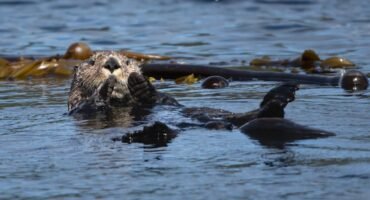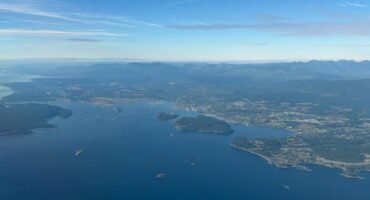
Port Lockroy, Antarctica
This post is part of our epic adventure to the Falklands, South Georgia, and Antarctica. In case you don’t want to read this sequentially, or you are looking for a specific part of the trip, here are some shortcuts:
- Introduction
- Departure Day
- Santiago, Chile
- Torres del Paine, Chile
- El Calafate, Argentina
- Ushuaia, Argentina
- Embarkation Day
- Stanley, Falkland Islands
- Sea Days
- Tour of the Ship
- Right Whale Bay, South Georgia
- Salisbury Plain, South Georgia
- Grytviken, South Georgia
- Fortuna Bay, South Georgia
- Stromness, South Georgia
- Godthul, South Georgia
- St. Andrews Bay, South Georgia
- Gold Harbour, South Georgia
- Cooper Bay, South Georgia
- The Scotia Sea Surprise
- Cuverville Island, Antarctic Peninsula
- Port Lockroy, Antarctic Peninsula <-- You are here
- The Drake and Ushuaia, Argentina
Port Lockroy / Jougla Point – January 12th
64°49’30.2412″ S, 63°29’39.2604 W
0 Celsius / 32 Fahrenheit – Overcast and light snow

We returned to the boat and napped during the three hour trip to our next destination, Port Lockroy. This would likely be the last opportunity for snorkelling, but I simply didn’t have the energy. Andy was determined to give it a go and slithered into his dry suit.
There was a massive cruise ship at the entrance to the bay. We learned that ships with more than 500 people can’t land anywhere, not even in shifts. I couldn’t imagine coming all that way and staying on the ship. It would be like travelling to a new country and not leaving the airport. But I guess if you are less mobile it could be a good option. And the landscapes were spectacular.

Port Lockroy is a former British research station and features a small museum and also the most southerly operational post office in the world nicknamed the “Penguin Post Office.” The landing was much more pleasant that Cuverville Island, though the walk up the rocks was slippery.



We were about halfway up when we spotted a leopard seal right near the zodiaks. We dashed back down to the zodiak for a quick circle of the bay, but were unable to find it.
I went back to Port Lockroy, while Andy headed out with the snorkelling group. I sent my mom a postcard, mainly to see how long it would take to go by ship to Ushuaia, then on to London, and back to the USA.
(side note: the postcard only took five weeks to get from Port Lockroy to the USA, and went via the UK)
After Port Lockroy, we transferred to Jougla Point on the other side of the bay. There were some interesting whale bones and Gentoo penguins sitting on their rock nests, and trying to avoid the swooping skuas.





Gentoo penguins are known for their quirky behavior of stealing rocks from one another’s nests. This behaviour, called “kleptoparasitism,” typically occurs during the nesting season when suitable nest-building materials are limited. Gentoos may opportunistically snatch rocks from nearby nests, sometimes causing disputes between neighbours.
There were two small sailboats in the protected bay. I assumed that these small boats would do the Drake crossing once at the beginning of the season, and then passengers would fly into King Island to join them. I was almost terrified to learn that expeditions on these boats start and end in Ushuaia and it can take up to a week to cross the Drake.

Because of the leopard seal in the area, the snorkelling was called off. Andy was disappointed at first, but they wound up finding humpbacks feeding along the glacier face. Unfortunately he only had his wide angle lens (in the underwater housing), so no photos and only memories.

We returned to our cabin after dinner and noticed that we were travelling a lot faster than we’d previously been cruising. Around 9pm, all passengers were summoned to the lecture theatre and informed by the captain that there was a medical emergency with one of the passengers and the decision had been made that an evacuation was necessary. We were a one-day sail from the airstrip at King Island, however due to cloud cover they would not be able to get an evacuation plane there for several days. The only alternative was to use the ship to evacuate. We would skip the last day of the expedition and chart a direct course for Ushuaia, where the passenger would board a medical evacuation flight back to the United States.

Next up — The Drake and Ushuaia
We’re Andy and Jennifer—two former corporate executives who chose long ago to prioritise experiences over stuff while pursuing our passions for travel and photography. From the Arctic to Antarctica, and most places in between, we’ve captured the world through our lenses and love sharing those stories. Our careers gave us the means, but our purpose is inspiring others to explore and helping people create images they’re proud of.




